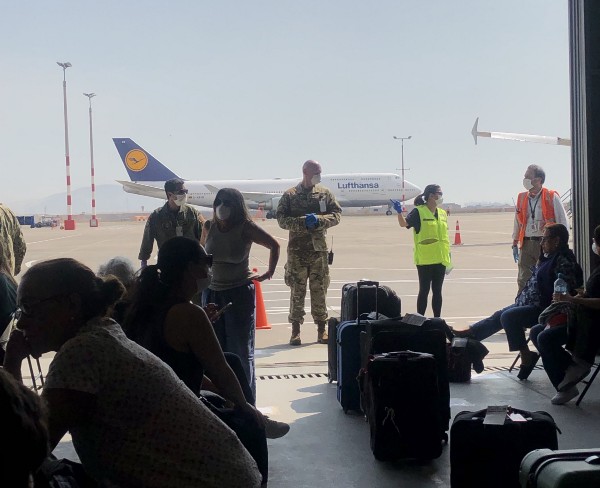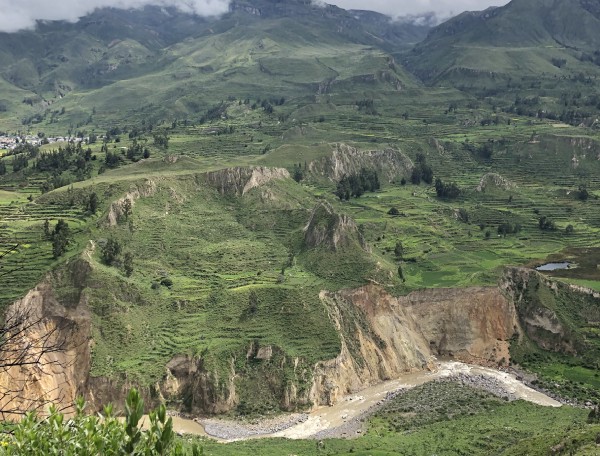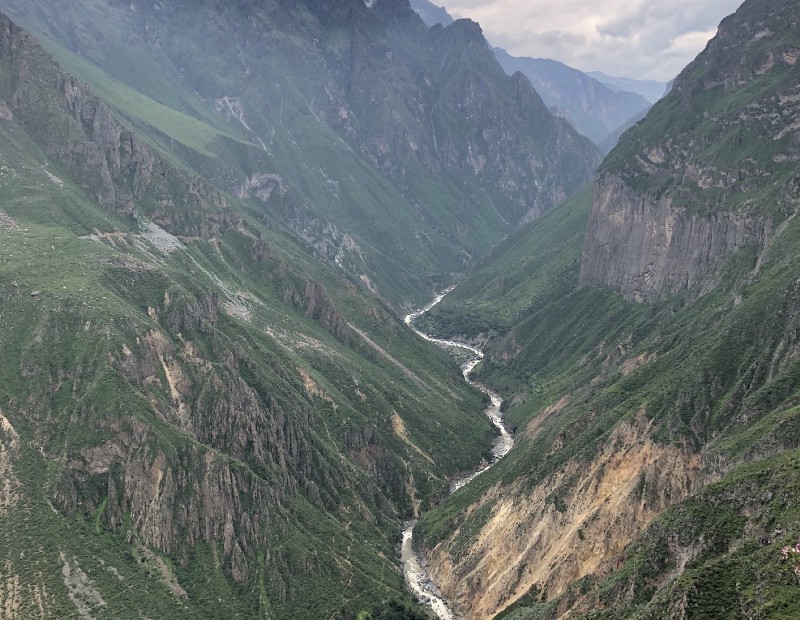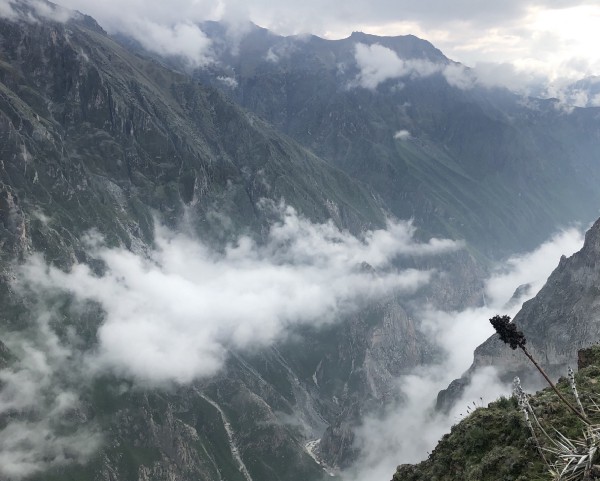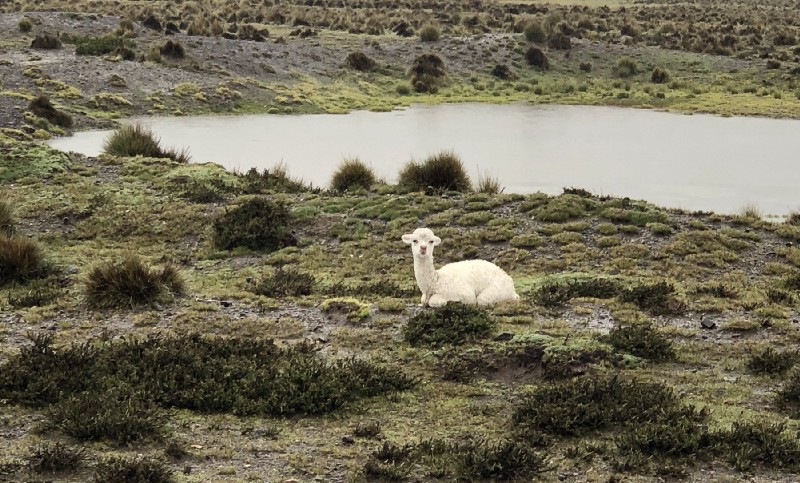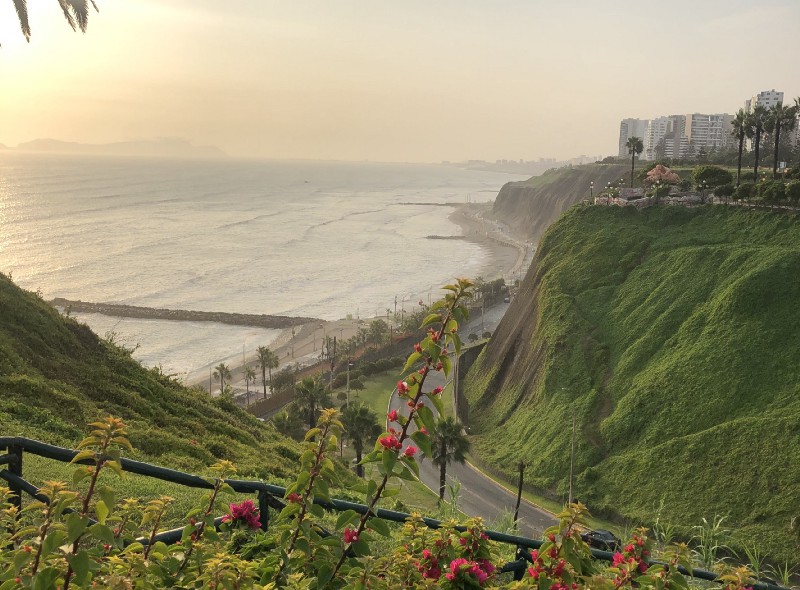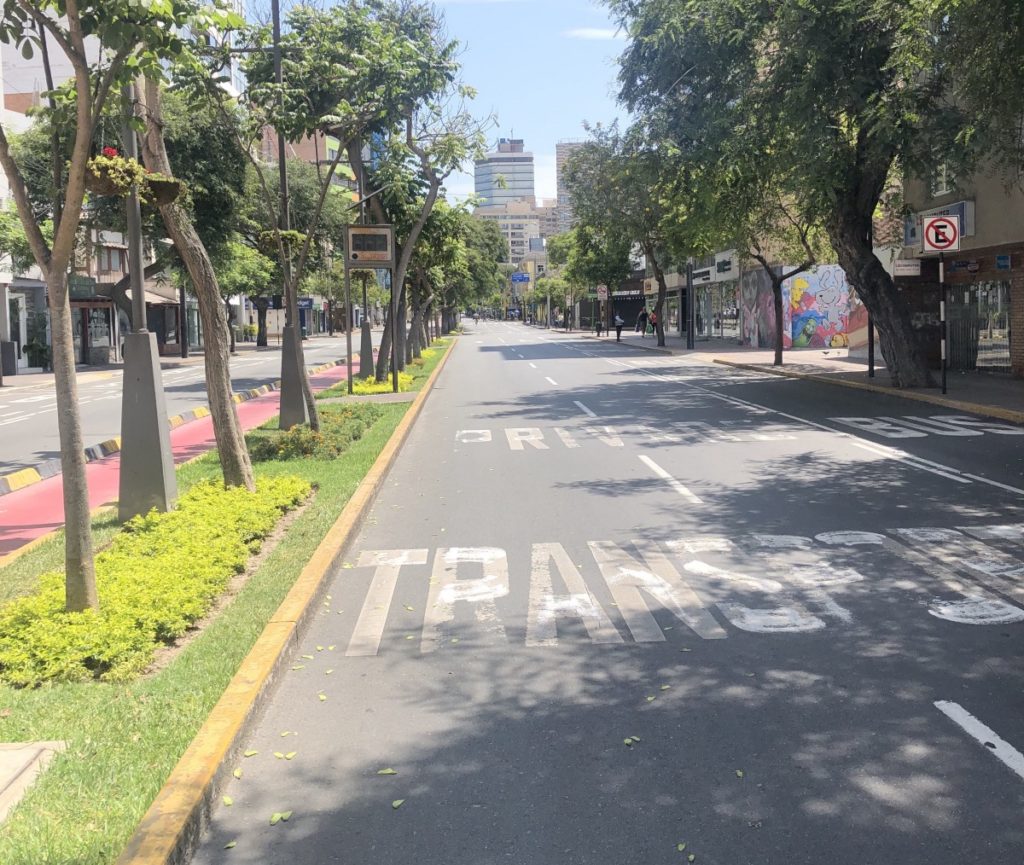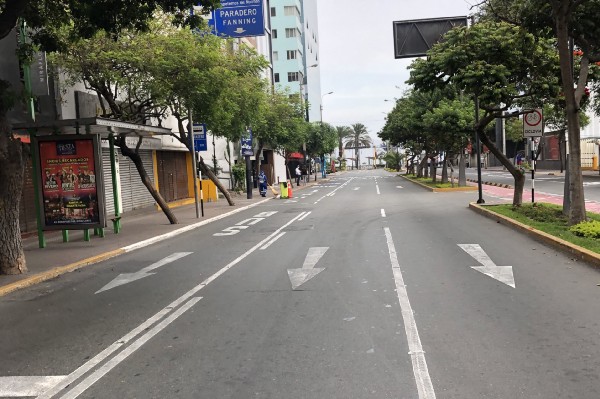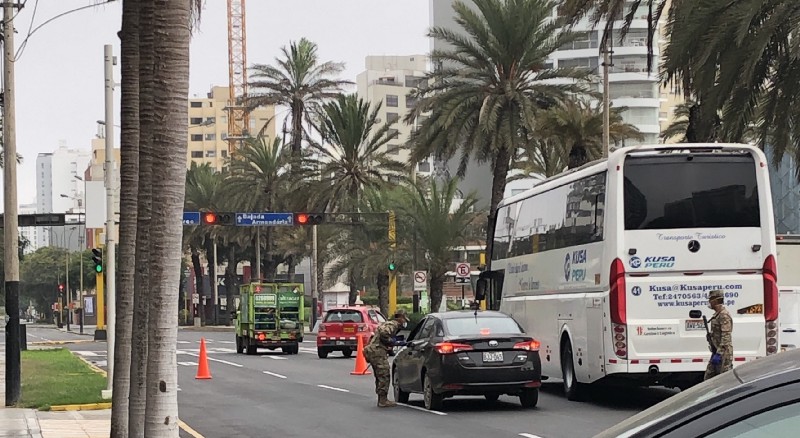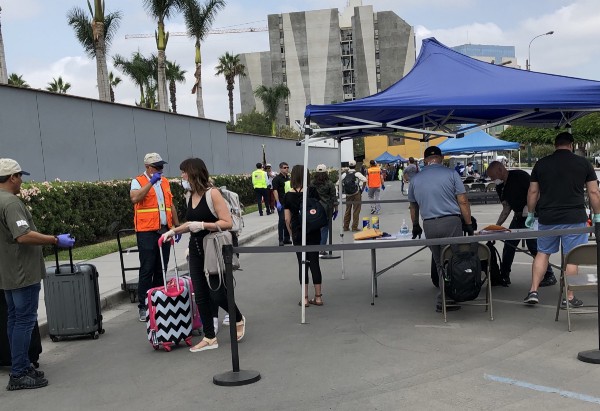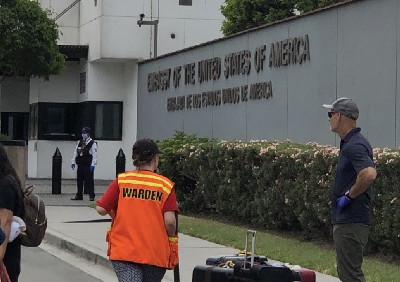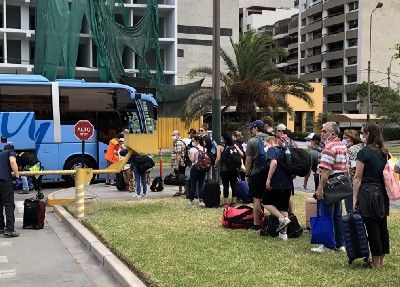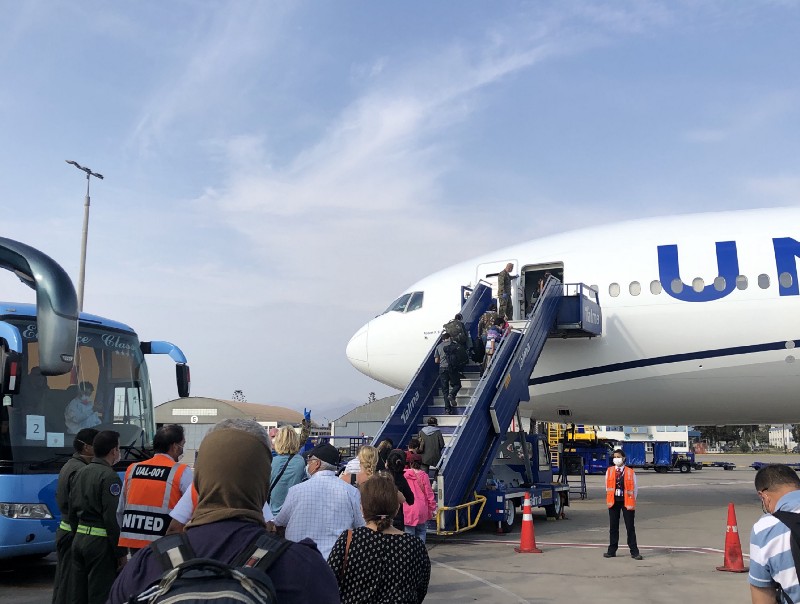I love to travel so when an opportunity comes up I head somewhere international. This year, my trip was to Peru which I had never visited before. As the Coronavirus pandemic was just building in early March, I started to think will my fight be cancelled for March 10th. In the week prior, I had started to see people buying hand sanitizer but for the most part things were calm and it was just another day commuting on the subway in New York. The idea of social distancing didn’t exist and virtually no one wore face masks. So the night before my flight, I made a final decision that I was going to go.
At the time, Peru had recorded just 3 cases which was substantially less than in the US. I got to JFK late morning for my flight after taking the subway to the airport. Things seemed normal, that is until I got to the airport.

It was eerily quiet and very different than the atmosphere on the streets of New York. I made my way to the gate thinking maybe it was just a fluke of timing and thought for sure my flight would be packed. After boarding the plane around noon, I was surprised to find plenty of leg room in coach!
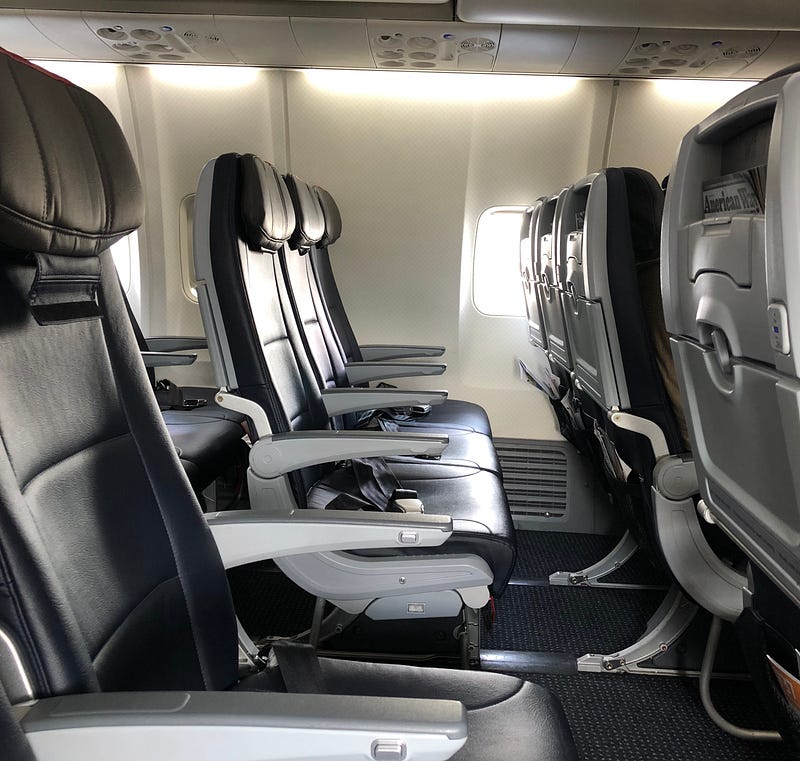
Upon arriving in Lima that evening, I went through customs where at the end they took my temperature which had not been done in NY. It definitely became clear to me that Peru was taking the virus very seriously even though they had now 6 reported cases (far less than the US). After leaving the airport, I spent the next week with my girlfriend, who was working abroad there, exploring Colca Canyon near the town of Arequipa. Most who visit Peru make the obligatory trip to Machu Picchu but given timing we opted to try something less touristy. Side note: Colca Canyon is breathtaking and an amazing hiking opportunity. The canyon is the second deepest in the world (deeper than even the Grand Canyon).
After a week in the canyon, we returned to Lima on March 14th where I was due to fly back on March 17th to New York.
Around 8p local time on March 15th, as we were riding on a bus back from Huacachina, there was commotion in the front as the driver announced that we would be stopping at a gas station to grab food and supplies. The President of Peru, Martin Vizcarra, had announced that due to the virus, he was instituting a national state of emergency and associated quarantine that would begin at midnight for 14 days. It’s at that moment it sunk in that the situation must have become dire. It was also announced that foreigners had one day to leave the country or else be stuck there through the quarantine. The next day was panic, as many of us tried to get flights to no avail. It was estimated that there were over 10,000 American’s stuck in Peru at that point.
So come Tuesday I was officially stuck in Peru. The rules were strict and would soon become stricter. You were only allowed outside in order to go to the hospital or directly to the grocery store. Ride share services and taxi’s were shut down. I, unfortunately, had been bitten by a stray dog when hiking in the canyon the week prior and was undergoing a series of rabies shots that required getting multiple vaccinations for a month post exposure. So here I was in quarantine, no idea where to find these shots. Since there were no taxi’s, I ventured out on foot to find a hospital. What I discovered were long lines and no one could tell me if they had the vaccine.

I eventually was told there was an animal clinic located in another area of town that would likely have it so started my 5 mile walk through the heat.
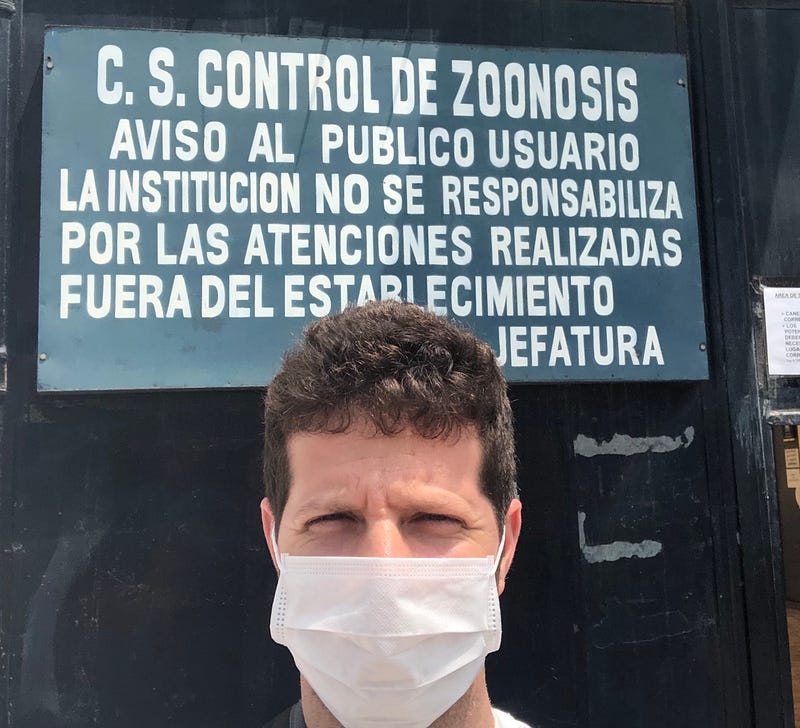
Feeling relieved I had gotten the shot, my next objective was getting out. There was a Facebook page created by other American’s in order to share information and band together to leave. Consequently, as we soon found out, the US Embassy in Lima had pretty much been abandoned and attempts to reach them weren’t fruitful. Each day we would receive an update via email saying that they were working to repatriate us but no more details were available. In the interim, the communication told us to abide by the strict quarantine or face being imprisoned.
By this point, the quarantine continued to get more austere as cases continued to rise in Peru. A friend of mine is a doctor in the main hospital in Lima so I was getting updates from him on the increasing cases. Peru lacked the infrastructure to handle a mass number of patients (and there were some discussions about only having 30 ventilators for the entire country). This made us all even more scared because if we got sick, its doubtful we would get care and if we did, the medical care was not up to western standards in the public hospitals. Armed police were present at most intersections. No vehicles were allowed on the road now at all and there was a late afternoon curfew. Additionally, no one was allowed outside on Sunday’s. Sitting in my room with this view outside was hard to say the least.
Meanwhile we continued to hear nothing from the US. It was clear there were issues as we all learned the US Ambassador to Peru, Krishna Urs, had departed the country for “medical reasons” and was trying to get us out from Washington. We needed help on the ground. There were elderly American’s and other foreign nationals stuck who were running low on medicines, people who were immune compromised, some stranded in remote areas near the Amazon as well as in Cusco (near Machu Picchu) who were already suffering due to altitude sickness. Knowing how Covid causes respiratory distress further heightened the sense of urgency to get help to those at high altitude.
We continued to get the run-around from the US on what’s happening. Many of us were emailing our senators, news outlets, etc to get the word out. Even President Trump acknowledged during a broadcast that there were American’s stuck in Peru and he was “advising the military to assist.” But then we heard nothing. What was even more frustrating is that by this time many European countries, Canada, Israel and even Australia had sent planes to repatriate their citizens. While the US and Peru have a solid diplomatic relationship it was clear there were major communication breakdowns. We found out we were actually being held hostage as Peru wanted their citizens repatriated from the US and then they would release us.
As the country was getting more desperate to contain the impact of the virus, they decided they would take the draconian measure of now implementing a gender based rule on top of the quarantine. On Mon, Wed and Fri men could leave during the day to go to the grocery store and on Tue, Thur and Sat Women could go. On Sunday no one was allowed out as before. This obviously caused a lot of major issues especially for single mothers who needed food for their children, and after significant backlash, the rule was abolished. As challenging as all these measures were, the energy in the neighborhoods of Peru was special. Every night at 8p, everyone would come out on their balcony’s and clap for first responders. Unlike in the US, grocery stores remained fully stocked. There was no panic buying and hoarding. Sadly though, a large number of Peruvians live in poverty and it was eye opening to see the disparity of wealth during this difficult time.
As time went on, the emails from the US State department kept saying to monitor your email for possible flight options. If you get a repatriation notice you must show up at the embassy within hours to head to a military base to then board a government flight for the US. Documents would be provide to show to officers if you get stopped for being outside. People seemed to be getting randomly selected to leave. We would hear on the Facebook page of people saying they “got out.” But no one could figure out how the US government was making their selections. After nearly a month in Peru, I finally got an email that I was on the passenger manifest to be repatriated.
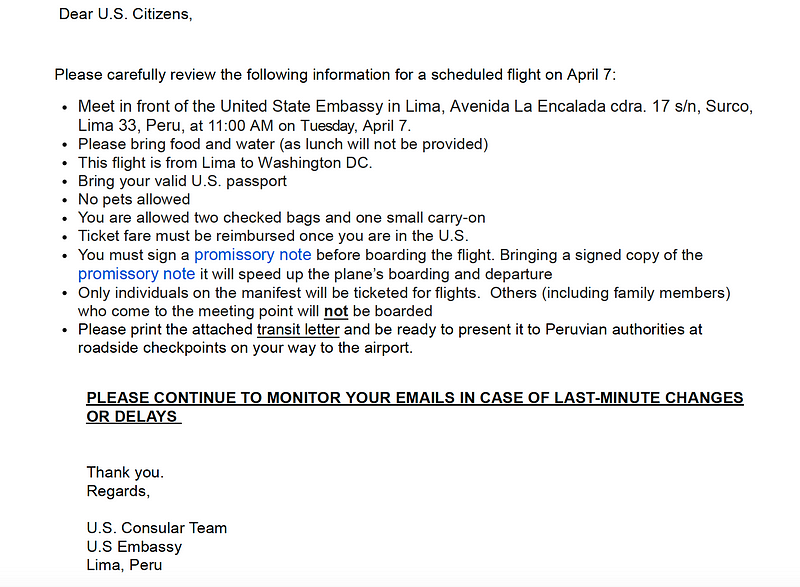
I arrived at the embassy and found the process very organized which had not been my experience to this point. We were checked in and then brought over to tables to sign a promissory note. This note is essentially a promise to repay the federal government for the return flight. It was mandatory to sign if you wanted to leave and unfortunately many families who were already destitute from the pandemic had no choice. The part that angered many of us was the exorbitant prices being charged which were supposed to be the same as a walk up coach class airfare. We were not told how much it would cost us but some estimates from various folks is around ~$2300 for the one-way flight. For reference, my original return flight on American Airlines was $300. The justification for the high cost was that the plane had to fly down empty to retrieve us but that wasn’t necessarily true as Peruvians were being repatriated back home from the US on the same flights. Either way, this caused a lot of frustration and anger among American’s stuck who felt that we were being price gouged by our own government. Other countries didn’t make their citizens pay at all. Now I’m not asking for tax payers to foot the bill of repatriating us, but I expected a more realistic fare at true cost.
After signing the promissory note we got in line to board busses that took us via police escort to a military base. It was during this journey that I saw another side of Peru that was hurting very badly. Hundreds of families walking down the highway trying to get back to their villages or in search of food. Social distancing wasn’t possible given the vast numbers of people in dire need of help. This is one reason why I believe Peru has been hit quite hard by the pandemic despite very strict quarantine measures by the government.
At the military base they brought us to a hangar where we were asked to walk single file and to remain seated once we got inside as exit immigration procedures would begin. It was the first time I can remember (especially since 9/11) where there was no X-ray as well as computers to process our exit. Immigration officials came around with an iPhone and took a picture of our passport and then provided an exit stamp. A police dog walked around and sniffed each bag but beyond that there were no more searches.
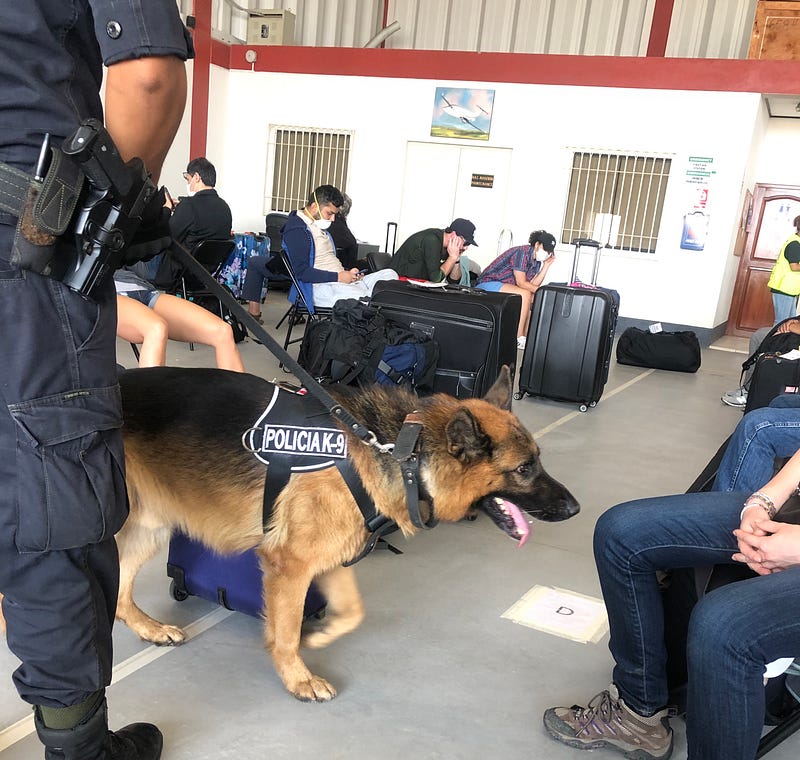
It had been about 6 hours since I arrived at the embassy and it was finally time to leave. We were bussed out to a B777 where we boarded our return flight. As they closed the aircraft door, the US Army came onboard and thanked us for our patience through the whole matter which led us all to erupt in cheers showing support and thanks for their help. We were headed home.
As I reflect back on the trip, as tense as it had been, I spent a lot of time debating with friends on if Peru has handled things well or not. My belief is they had no choice but to take strict measures to protect the lives of the estimated 32 million who live there. By virtually shutting down the entire country I believe it helped curtail what could have been thousands of more deaths which was something the US had not done. Peru is an absolutely beautiful country with amazingly helpful and friendly people who are all going through immense change right now. I’m fortunate to be back, but when this pandemic is behind us and international travel resumes, I will return to continue supporting this great nation.

